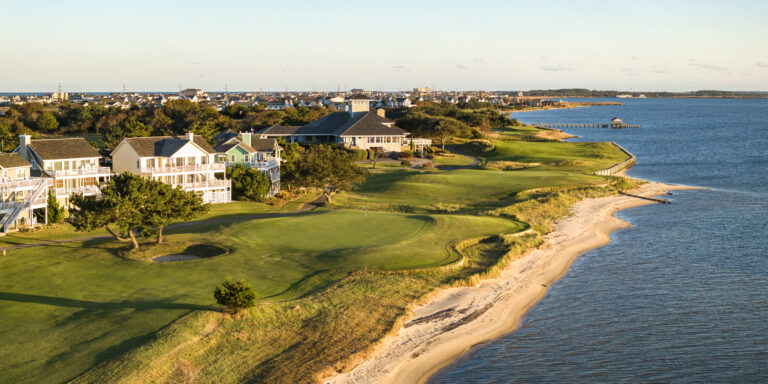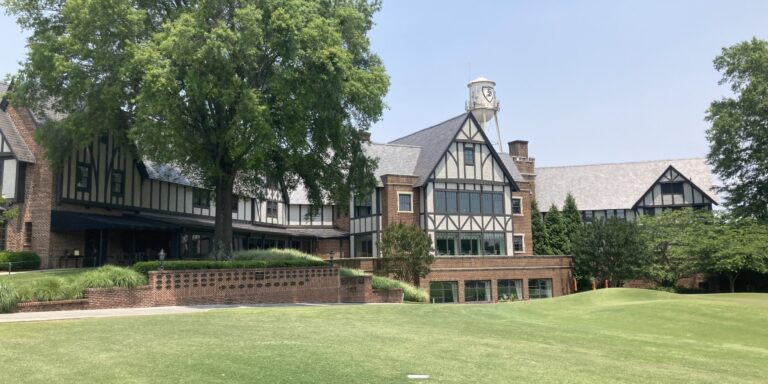A die-hard University of North Carolina sports fan since she was a young girl, Kayla Smith always dreamed of competing in sports for the Tar Heels, maybe in soccer or basketball.
When she decided to concentrate on golf at Williams High School in Burlington, Smith was told her game wasn’t good enough to play at for the Tar Heels by then-UNC coach Jan Mann.
This spring, Smith finished a five-year career ranked No. 2 all-time at the school in scoring average at 73.11, trailing only teammate Megan Streicher. A two-time All-ACC player, Smith helped lead the Tar Heels to a berth in the NCAA Championship, where she finished in a tie for 28th in stroke play.
A few weeks after graduation, she won the Carolinas Golf Association Women’s Amateur, beating several ACC rivals and earning a spot in August’s U.S. Women’s Amateur. After that, her plan is to turn pro.
“All Kayla ever wanted to do was to play at UNC,” recalled Heather Hauk, Smith’s instructor at Alamance Country Club since the then 6-year-old Smith came to her for lessons with a Tar Heel head cover over her driver. “If you tell her she can’t do something, then look out.”
Hank said Smith’s “hard-headed determination” drove her to become a great player. As a high school junior, Smith developed into one of the state’s top juniors.
“I got a late start, and I felt like I was behind the curve,” Smith said. “The U.S. Girls was a real turning point for me, believing I could play with the best players.”
In 2018, she was a first-team all-state high school selection. The next year, she made the round of 32 in the 2019 U.S. Girls’ Juniors and earned her first of two top 5 finishes in the North and South Junior in 2018 and 2019. She had several other strong showings against national and international fields.
Improved play in her final years at Williams, capped by her U.S. Junior Girls performance helped her earn a spot with Mann at UNC. In her freshman year, Smith missed by a single shot in qualifying to play for the Tar Heels in their opening-season match. She qualified for the next tournament and responded with a top 20 finish.
She was on full scholarship for her junior year with the Tar Heels.
“I think I took that as a big motivator,” Smith said of the first qualifying miss.
Smith proved Mann wrong, playing for Mann and the Tar Heels for two seasons, and placing No. 2 on the team in stroke average in Mann’s final season before she retired in 2021.
Now, Smith has turned that determination toward a pro career.
A former basketball standout, the 5-10 Smith has the athletic skills to succeed as a pro. She was one of college golf’s longest hitters with drives of 270-300 yards. Hauk said she also has an outstanding iron game.
“I’ve always been really good with approaches,” Smith said. “I think my short game is getting tighter and tighter.
“Her mechanics are solid,” Hauk said. “We’ve got to get the flatstick going. Her mental game is strong. She has all the physical tools. Like many great players, it all depends on putting.”
Smith has tinkered this summer with a new Bettinardi mallet putter. Hauk is also working with Smith on specialty shots she may need in tough situations.
At elite college amateur events this summer, Smith failed to make the cut for match play at the North and South at Pinehurst and the Women’s Western Amateur, where she missed by a single stroke.
She practices at UNC’s Finley Golf Course facilities in preparation for trying her luck at earning a spot on the LPGA Tour. She is also working with putting specialist David Orr, who operates his Flatstick Academy out of Pine Needles Resort in Southern Pines.
“I’m definitely relying on people who are good at what they do,’ Smith said. “At UNC, I have access to a ton of great resources.”
Smith could have graduated in 2023 — she had only on online class this past spring — but wanted another year at UNC to sharpen her game before turning pro.
“I wanted to take the best path to find my way to the LPGA Tour,” she said. “It was so nice to have the extra time at the golf course.”
A highlight of Smith’s fifth year at UNC was a medalist victory in Scotland with 2-under 142 as UNC beat Vanderbilt, Georgetown and Notre Dame in the St. Andrews Collegiate Links tournament on St. Andrews’ Jubilee Course. A few weeks earlier, she matched her competitive low score with a 65 in the Tar Heel Invitational at Governor’s Club.














